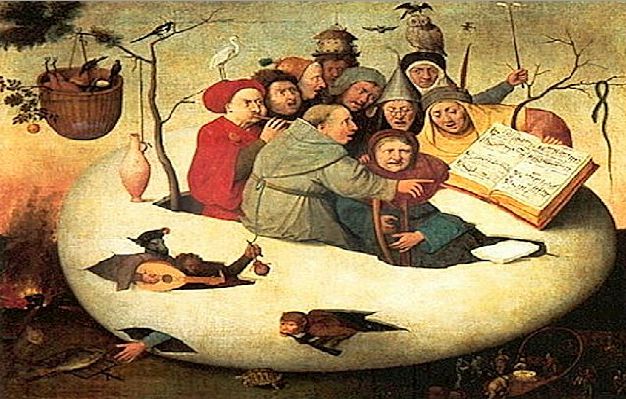Church music was not simply about the music—its text was paramount. And having two-, three-, or four-voiced works made a variety of texts possible as well. Remember Notker Balbulus’s idea of the sequence, or trope?
The idea of adding new words was spread to organum voices, and words were added to the duplum, triplum, and (if there were one) quadruplum voices. The cantus firmus still had its original Latin, but the other voices might be in Latin or French. Further, one line might have a sacred text and another a secular text.
These multi-texted offerings became known as motets, from the French word for “word,” mot. One would think that this might sound like “cats in January,” and yet, because listeners were hearing separate lines, the motet rapidly gained popularity among musicians and listeners alike.
Motets could be sacred or secular—or, in a time when there was no separation of church and state, a mix of both. Sacred motets were not part of Mass ordinary movements, but they used Biblical texts or dealt with sacred topics. Two-voiced sacred motets usually used Latin lyrics, but three-voiced could include a line of French. Secular motets used a wide range of texts and subjects, from love topics to scathing political rants. They usually used part of a Latin chant in the bottom voice, but the upper voices were usually in French, and there is a theory that the bottom line might have been played on an instrument rather than sung in Latin.
Motet titles appear confusing to the modern reader. What is one to make of a title such as Quant voi/Au douz tans/Hodie? This type of title is known as an incipit, from the Latin word for beginning, and it is the first few words from each line of text included in the motet. In other words, while the triplum voice is singing “Quant voi,” the duplum is singing “Au douz tans” and the cantus firmus is “Hodie,” part of a Gregorian chant.
In this case the texts are rather mild. The “Hodie” text is from a biblical phrase, “Today it has purified.” The duplum voice, translated, begins, “In sweet, pleasant weather, when birds are happy.” The triplum translates as, “When I see winter return and also the cold.”
But as time went on, musicians began to slip texts and even melodies of a much more secular type into their motets. It was a sly, rather tongue-in-cheek maneuver to put the most questionable text—sometimes with its original melody, though embellished—into the middle voice, where it was less likely to be identified by persons not carefully listening. One example of this is Mout me fu grief/Robins m’aime/Portare. The cantus firmus, Portare (to carry) is in Latin, part of an old chant. The top voice is a trouvère song of a fairly innocuous type, the words translating “It grieved me greatly, the parting of my loved one . . .” But the middle voice retains both the words and original melody of a song that has Maid Marian singing of Robin Hood, “Robin loves me, Robin has my love, Robin has asked for me, he may have me.”
Multiple voices also left room for some musical tricks. One popular technique was the hocket, coming from the French word for “hiccup.” Voices would be singing along until suddenly, all except one would stop and the “leftover” voice would seem to pop out. Or, two upper voices would seem to sing every other note for a few beats, creating a sort of early stereo effect that must have been startling in its time.
Another effect was stimmtausch. This was a form of voice exchange where one voice would “steal” notes from another’s melody for a few notes. In fact, both voices might switch into one another’s territory for a few notes before returning to their own. It had the effect of a musical raid.








